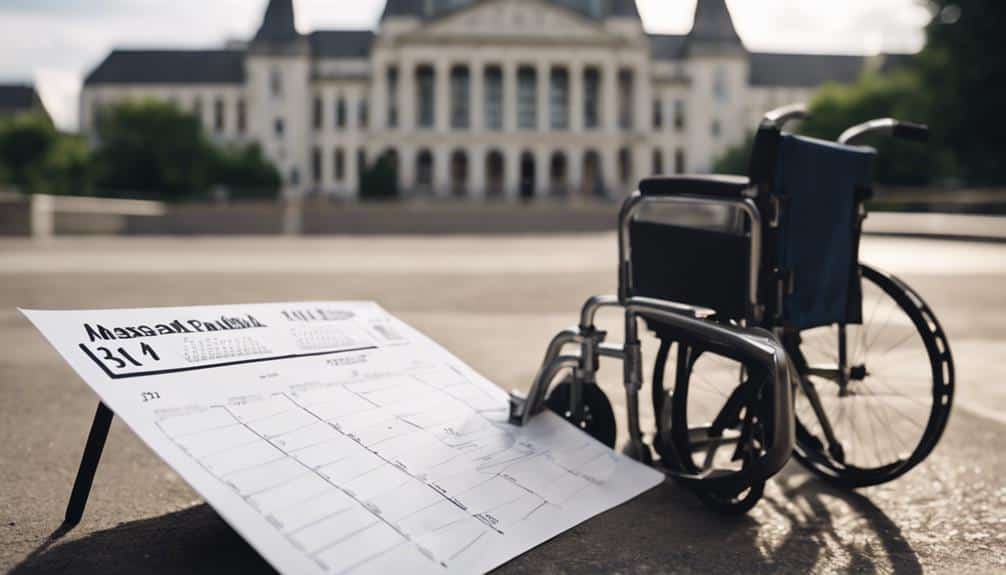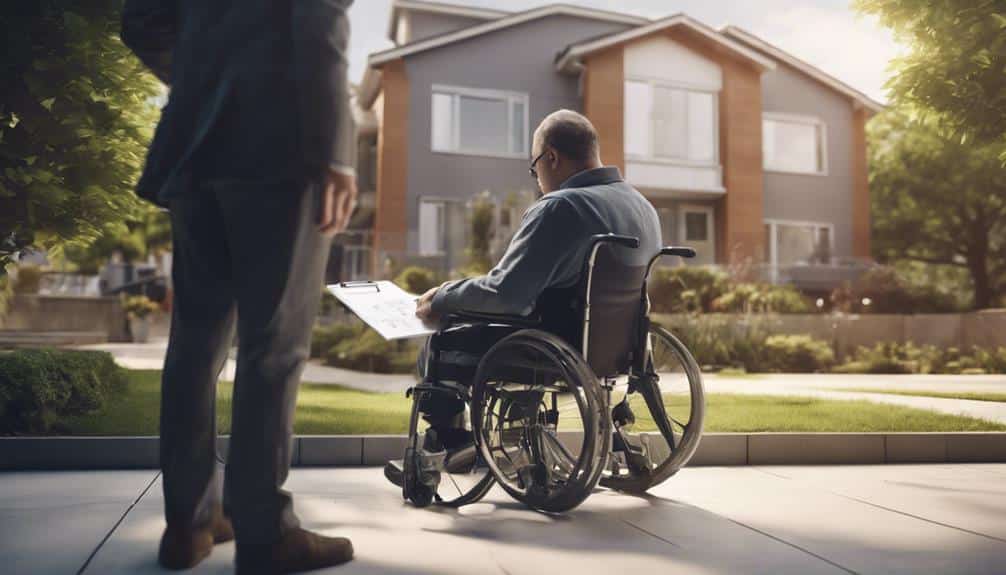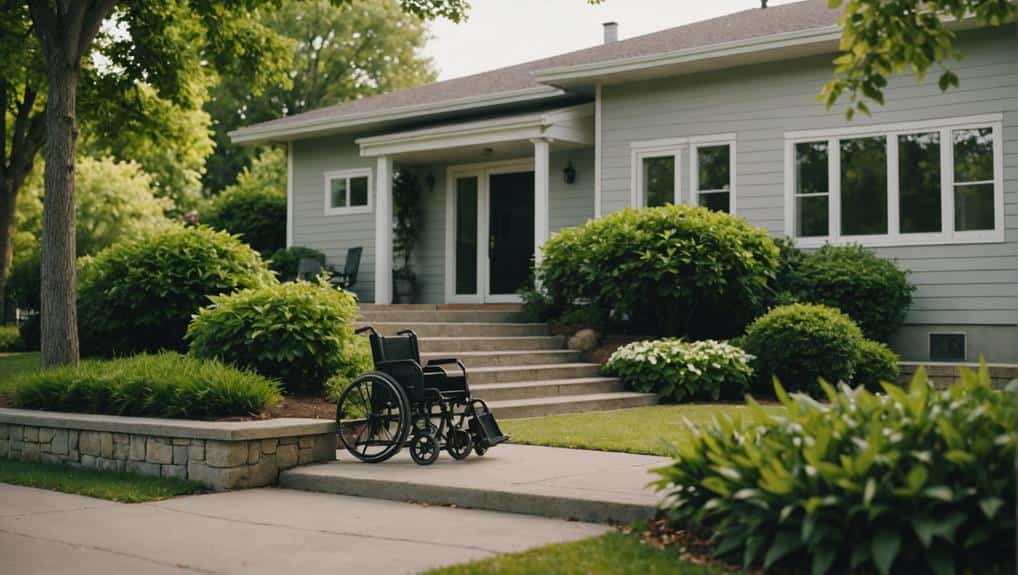Do I Need A Permit To Build A Wheelchair Ramp
You usually need a permit to build a wheelchair ramp at home. This is because it's a big change that must follow safety rules in your area. The permit shows that your ramp is safe and meets building regulations.
You can get the permit at your local public works office. The cost can be between $150 and $1,500, depending on where you live. It might seem like a hassle, but having a permit ensures your ramp is safe and avoids any fines or problems.
Knowing how to get a permit will help you move forward confidently.
TLDR
- You usually need a permit to build a wheelchair ramp, especially for permanent ones.
- Permit costs vary by where you live, from $150 to $1,500, and make sure your ramp follows local rules.
- Portable ramps might not always need a permit, but it's best to check with local officials to be safe.
- Following local rules is important to get a permit and make sure your ramp is safe and useful.
- You can apply for a permit at the local public works office to avoid fines and have a good ramp.
Understanding Building Permit Requirements

So, what do you need to know about getting a permit for installing a wheelchair ramp?
You have to get a permit to make major changes to your home, like putting in a ramp. This permit shows that the work follows the rules for building safety.
You can apply for the permit at your local public works office and do what they ask. The cost of the permit can be between $150 to $1,500, depending on where you live.
You must follow the local building codes to get the permit. Following these rules will help you install your wheelchair ramp smoothly and legally.
Types of Wheelchair Ramps and Permits
If you want to install a wheelchair ramp, you'll have a few types to choose from. Permanent ramps, which stay fixed to your home, usually need a building permit. These ramps have to follow local rules to ensure they're safe and accessible.
On the other hand, portable ramps that can be moved mightn't need a permit, but it's smart to check with your local government to be sure. Sometimes, there are special permissions for building ramps at home, so it's worth checking.
Knowing the different ramp types and permits can help you pick the right one that fits your needs and follows the rules in your area.
Cost and Maintenance Considerations

When you're planning to build a wheelchair ramp, it's important to think about how much it will cost and how much upkeep it will need.
Different materials can have different costs, with wooden and concrete ramps being more expensive initially.
Ramp Material Costs
When building a wheelchair ramp, one important factor to consider is the cost of different materials. Steel and aluminum ramps are typically priced similarly. Wood ramps can be the most cost-effective option if you decide to do the construction yourself. However, if you opt to hire a contractor, wood ramps can end up being the most expensive choice. Concrete ramps tend to be the most expensive due to their design and installation requirements. Despite the higher cost, concrete ramps generally require less maintenance in the long run.
Steel ramps may be prone to rusting over time, necessitating periodic touch-ups to maintain their appearance and integrity. On the other hand, wood ramps need to be regularly sealed to prevent damage from weather exposure and wear. Aluminum ramps offer a sleek, commercial aesthetic but may not blend seamlessly with residential settings. Although aluminum ramps are lightweight and easy to install, they are not as durable as steel or concrete ramps, which could be a crucial consideration depending on the ramp's intended usage.
Ramp Maintenance Needs
When choosing a wheelchair ramp, consider the maintenance needed for each material. Concrete and aluminum ramps need the least upkeep.
Steel ramps may need a touch-up to prevent rust, while wood ramps need regular sealing. Think about how much time and effort you can put into maintenance.
Choosing a low-maintenance option will keep your ramp safe and functional for a long time.
Safety Features and Regulations
When you build a wheelchair ramp, you must consider important safety rules and standards to make sure your project follows local codes and accessibility guidelines. Choose the right ramp material, follow building codes, and know about exceptions in the Americans with Disabilities Act (ADA).
Ramp Material Selection
When picking a material for your wheelchair ramp, it's important to think about the good and bad points of each choice.
For a home ramp, steel is a common option because it has a rough surface that stops slipping and lets water go through, making it safer.
Aluminum ramps are softer and less tough, with grooves for grip that wear out fast, affecting safety and how long it lasts.
Concrete and wood ramps also have their own pros and cons. Concrete doesn't catch fire but can be slippery when wet. Wood needs regular care to stay safe.
Building Code Compliance
How do you make sure your wheelchair ramp is safe and follows the rules? Building codes tell you what safety features your ramp needs to be sturdy and safe to use.
It's important to follow these codes to avoid accidents and to make sure people with mobility challenges can easily use the ramp. The rules might include things like the slope of the ramp, how wide it should be, the size of the landing, and the height of the railing.
If you don't follow the building codes, you could get fined, have to remove the ramp, or face other legal problems. It's crucial to look up and follow the local building codes to ensure your ramp is safe and accessible for everyone.
This way, you'll have a strong and reliable ramp that meets all the necessary standards.
ADA Regulations Exemptions
Keep in mind that you don't have to put in a wheelchair ramp at your private home unless your local rules require it. This means you have more freedom to design a ramp that works for you.
The Americans with Disabilities Act (ADA) rules don't apply to private homes, so you have flexibility. Just follow your local building codes for safety when you install a ramp. These codes give you the guidelines you need, without the strict ADA regulations for public spaces.
Obtaining a Building Permit for Ramps

Before you build a wheelchair ramp, make sure to get a permit from your local government. This is a must for big home projects like ramps.
Go to your city's public works office to apply for the permit. Costs can range from $150 to $1,500, depending on where you live.
The permit ensures your ramp is safe and follows the rules. Remember, most places need a permit for ramps, so don't forget this step.
Getting a permit helps you avoid fines and makes sure the ramp is safe and easy to use.
Timeframe and Approval Process
After you apply for a wheelchair ramp permit, the local building department will review it. The time it takes to get approval can vary. There's no set timeframe, but working with experts can help.
To speed things up, make sure your application is error-free and follows the rules. You need to follow the steps the building department tells you. Getting advice and having all the necessary info ready can make things go faster.
Compliance With Local Building Codes

Building a wheelchair ramp must follow local rules to make sure it's safe. Each place has its own building codes, so you need a permit to show your ramp is up to standards.
Check with local officials for the specific rules you need to follow. Getting a permit is important to ensure your ramp is safe and meets all the necessary rules.
Appeals and Variance Process
If your permit application is turned down, you can appeal the decision. This process allows you to challenge the ruling and possibly change it. It gives you a chance to provide more information or clear up any misunderstandings that led to the denial.
You might also need to ask for a variance, which means asking for a change from the regular building codes. Your neighbors might be told about this, and if they don't object, the change is usually allowed. Council members can help you through this process.
Keep in mind that appealing a permit decision based on reasonable accommodation for disabled individuals is a good reason, so don't give up if your first application is rejected.
Conclusion
Congratulations on finishing this guide! Now you understand why it's essential to get a permit for your wheelchair ramp. Permits ensure your ramp is safe and meets local building rules.
Spend time researching and following these regulations to avoid expensive fixes or penalties. By doing this, you'll create a safe and accessible area for everyone to use.





